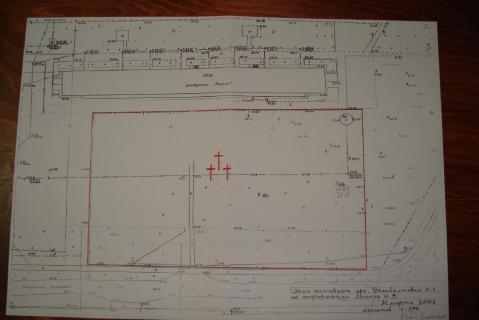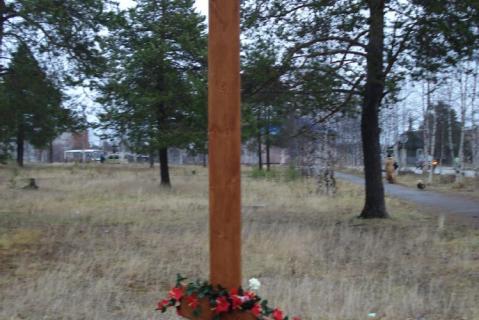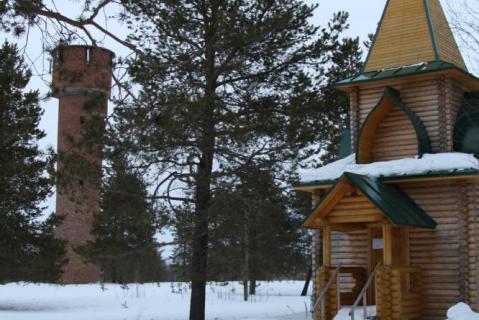In 1940-1942 prisoners who died in infirmary No. 5 of Sevpechlag were buried in common graves in the cemetery. From 1942 to 1946 a children’s cemetery for mothers and infants under two years old existed there as part of camp outpost No. 25. They were buried in individual graves marked by stakes carrying a number. Forced settlers and, sometimes, free workers were also buried there. The cemetery then covered 9,750 square metres. The total number of buried prisoners is unknown; the cemetery was closed in 1946 but burials continued until 1949.
In 1954 a water tower was built on the site. Crosses on graves survived into the 1960s and later but the territory did not have the status of a cemetery and was not protected. Residents of Pechora began to use the land for allotments. In the 1970s a sub-district of the town came into being there: a residential block and a square were built on the site. In 2007 an Orthodox cross was erected in the square in memory of those who suffered during the years of repression. In 2009 a chapel dedicated to Russia’s New Martyrs and Confessors was consecrated there.
Repentance: the Komi Republic Martyrology of the Victims of Mass Political Repression (11 vols. 1998-2016), includes biographical entries on 52,785 who were sent to the camps in Komi, of whom over 10,000 died there. (See Nizhny Chov.)
Drawing on the Komi Republic Book of Remembrance and other sources, the Memorial online database (2025) names 225 prisoners who were held in Sevpechlag, eight of whom died in captivity.
| Date | Nature of ceremonies | Organiser or responsible person | Participants | Frequency |
|---|---|---|---|---|
|
25 January
|
Feast of Russia’s New Martyrs and Confessors
|
nk
|
priests and parishioners, relatives of those buried in the graveyard
|
Annual event
|
|
30 October
|
Remembrance Day for the Victims of Political Repression
|
nk
|
members of the public, town administration
|
Annual event
|
| State of burials | Area | Boundaries |
|---|---|---|
|
have not survived
|
not determined. Cemetery originally covered 9750 sq m
|
not delineated
|
[ original texts and hyperlinks ]
T.G. Afanasyeva, “The history of one burial”, Pechorskoe vremya, 29 October 2008
*
“Pechora. Infirmary No 5 prisoners cemetery”, The Virtual Museum of the Gulag [retrieved, 26 May 2022; no longer accessible, August 2025]
Reply from Pechora municipal district administration (No 01-14-6229 of 7 July 2014) to a formal enquiry by RIC Memorial (St Petersburg)



